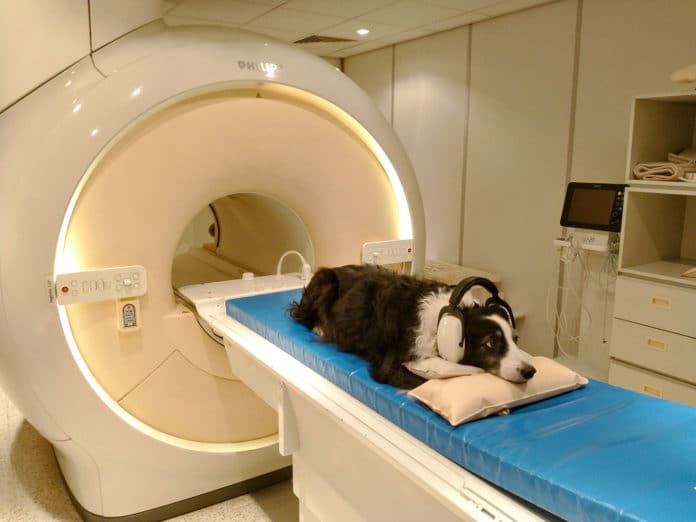Acoustic regularities, such as prosodic features or the distribution of speech sounds, are characteristics of every language. Humans learn about these characteristics well before the semantically or syntactically informed phases of language acquisition.
Infants also discriminate between familiar and unfamiliar languages belonging to different rhythm classes. In contrast, discrimination between two languages of the same rhythm class appears to require previous familiarization with one of the two. Underlying speech detection and language discrimination do not require a higher level of linguistic competence.
Dogs kept as companion animals share with humans an intense exposure to speech in their natural environment. Human voices in general, and speech in particular, are familiar and highly relevant to dogs.
They are exposed to a continuous flow of human speech throughout their lives. However, the extent of their abilities in speech perception is unknown.
According to a new brain imaging study by researchers from the Department of Ethology, Eötvös Loránd University (Hungary), Dog brains can detect speech and show different activity patterns to familiar and unfamiliar languages.
This first-ever study demonstrates that a non-human brain can differentiate two languages. This work has been published in NeuroImage.
When comparing brain responses to speech and non-speech, researchers found distinct activity patterns in dogs’ primary auditory cortex. This distinction was independent of whether the stimuli originated from the familiar or the unfamiliar language. However, no evidence observed that dog brains would have a neural preference for speech over non-speech.
“Dog brains, like human brains, can distinguish between speech and non-speech. But the mechanism underlying this speech detection ability may be different from speech sensitivity in humans: whereas human brains are specially tuned to speech, dog brains may simply detect the naturalness of the sound,” explains Raúl Hernández-Pérez, coauthor of the study.
In addition to speech detection, dog brains could also distinguish between Spanish and Hungarian.
These language-specific activity patterns were found in another brain region, the secondary auditory cortex. Interestingly, the older the dog was, the better their brain distinguished between the familiar and the unfamiliar language. “Each language is characterized by a variety of auditory regularities. Our findings suggest that during their lives with humans, dogs pick up on the auditory regularities of the language they are exposed to,” says Hernández-Pérez.
“This study showed for the first time that a non-human brain can distinguish between two languages. It is exciting, because it reveals that the capacity to learn about the regularities of a language is not uniquely human. Still, we do not know whether this capacity is dogs’ specialty, or general among non-human species. Indeed, it is possible that the brain changes from the tens of thousand years that dogs have been living with humans have made them better language listeners, but this is not necessarily the case. Future studies will have to find this out,” say Attila Andics, senior author of the study.
Journal Reference
- Laura V.Cuaya, RaúlHernández-Pérez, MariannaBoros, AndreaDeme, AttilaAndics. Speech naturalness detection and language representation in the dog brain. NeuroImage 2021, 118811 DOI: 10.1016/j.neuroimage.2021.118811
